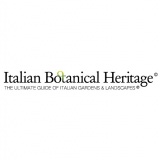
 Italian Botanical Heritage
Italian Botanical Heritage
Italian gardens and parks: Bosco delle Sorti in Trino
- WTI Magazine #161 Mar 18, 2023
-

 Italian Botanical Heritage
Italian Botanical Heritage
The Bosco delle Sorti Safeguard Zone extends into a hilly environment with a viticultural vocation that lies between 118 and 311 meters above sea level, in a transition zone between the floodplain and the slopes, which rise gradually towards the Apennine belt. Its objective is to integrate and define the conservation and management of natural and landscape resources in a homogeneous territorial context, through initiatives to enhance the cultural heritage, traditions, typical local economies, and rehabilitation of the built and urban heritage.
Regarding naturalistic aspects, the climate is characterized by low rainfall combined with the superficiality of soils has determined the development of xerothermophilous plant formations.
At the same time, the wine vocation of the area has given them a strong landscape connotation. In fact, the area produces D.O.C. wines of great value, such as Brachetto d'Acqui, Dolcetto d'Acqui, Barbera d'Asti and del Monferrato, Cortese dell'Alto Monferrato, Moscato d'Asti, and Asti spumante.
Vegetation
Wooded formations are interspersed discontinuously with vineyards, arable land and stable meadows. The forests, which are fairly well maintained in the area formerly occupied by the Bosco delle Sorti, of about 300 hectares, are predominantly oak (Quercus pubescens) and turkey oak (Quercus cerris) in the ridge areas and warmer exposures; in cooler exposures, however, oak (Quercus petraea) and chestnut (Castanea sativa) predominate, accompanied at times by oak (Quercus robur).
In other areas, exotic and weedy species such as Robinia pseudacacia, Rubus spp., Clematis vitalba, and Solidago gigantea prevail.
Characterizing the undergrowth are the brooms Cytius scoparius, Genista germanica, fairly common and typical of heathland, Cytisus villosus, here at the limit of its range, Genista cinerea, found only in Piedmont and Liguria in the strip between the Ligurian Apennines and the Maritime Alps, and Erica arborea, at the northern limit of its range, the maintenance of which is linked to the practice of coppicing.
There are also some Orchidaceae species protected by regional legislation, including Orchis morio, Orchis sambucina and Platanthera chlorantha.
Wildlife
The park is home to wild boars, foxes, European hares, pine martens, badgers, hedgehogs, squirrels, dormice, shrews and some species of bats.
Birds include the red woodpecker, green woodpecker, owl, buzzard, and some species of hunting interest such as pheasant, partridge, quail, and mallard.